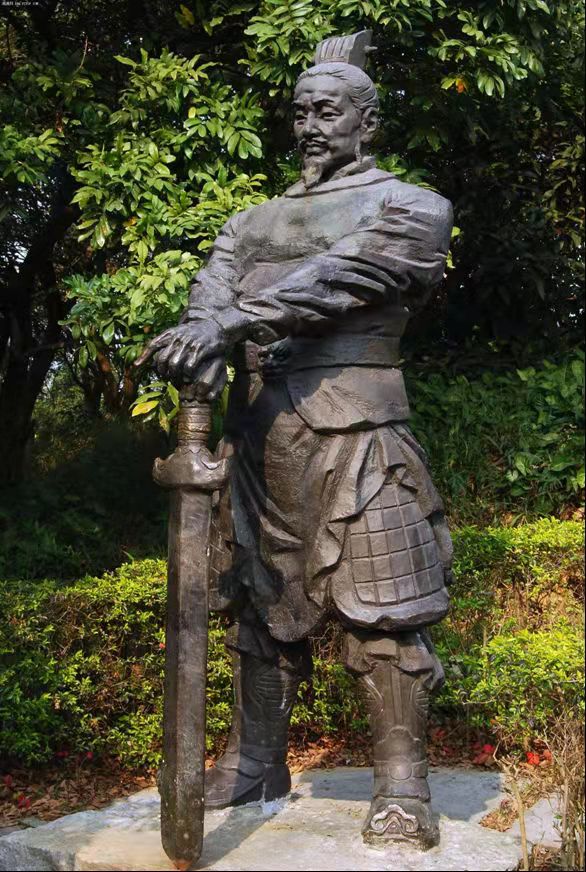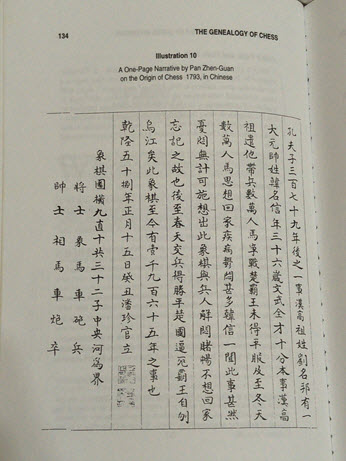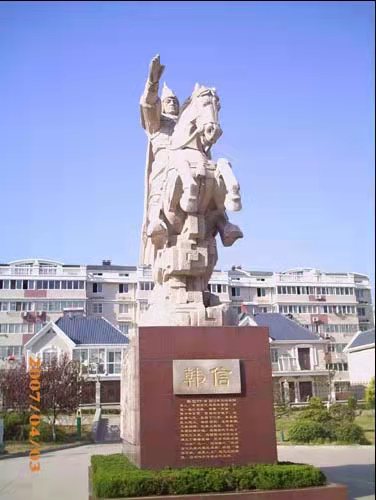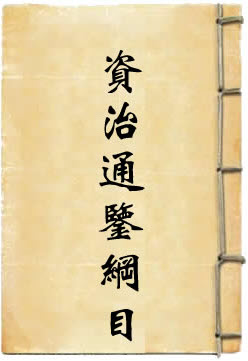Origins of Xiangqi (Chinese Chess) 12b General Han Xin Part 2
Author: Jim Png of www.xqinenglish.com
Note: This article first appeared on Xiangqi.com.
The second instalment of the article examining the hypothesis of Han Xin will focus on his credibility as a possible inventor of Xiangqi and the writings of Eyles Irwin and his informant, Tinqua.
An overview of the entire article is as follows:
- Who was Han Xin?
- Hypothesis 11a: Han Xin invented Xiangqi as a means to end boredom during battle
- Hypothesis 11b: Han Xin taught his prison guard to preserve his military knowledge and wisdom
- Han Xin, the Military Strategist
- Eyles Irwin mentioned the Han Xin hypothesis
- David Li supports the Han Xin hypothesis
- Putting the Han Xin Hypothesis in perspective
- The Han Xin Cup
- Afterthoughts:
As the article is too long, it has been divided into three portions which will be uploaded weekly.
Han Xin, the Military Strategist
As Han Xin has been implicated as the inventor of Xiangqi, did he have the credentials or ability to do so?

Diagram 4 Statue of Han Xin, Reproduced from the internet
Han Xin was an accomplished military strategist. He has been deified as the Deity of Military Affairs (兵仙 bīng xiān) and was known to have read many ancient military books and even wrote three scrolls himself. His original writings are non-extant, but they were mentioned in the Book of Han, which chronicled the history of the early Han Dynasty. The Book of Han was written by Ban Gu (班固 32-92AD, Bān Gù).
《漢書。志。藝文志》
藝文志: 韓信三篇。右兵權謀十三家,二百五十九篇。 (16)
This passage would mean that there were three passages by Han Xin. They could be books or scrolls that he had written. Unfortunately, Han Xin’s works are not extant to the author’s knowledge. The passage that follows is also interesting. According to Ban Gu, military strategy during the Han Dynasty could be divided into four types (author’s translation):
- Military Strategist (兵权谋家 bīng quán móu jiā),
- Terrain/Situation Specialist (兵形势家bīngxíng shì jiā),
- Military Medium (supernatural) (兵阴阳家 bīng Yīn yang jiā), and
- Military Weapons specialist (兵技巧家bīng jì qiǎo jiā)
Each type had books and scrolls dedicated, but only books belonging to the first two categories are still extant today.
For the Military Strategist, the books still extant include Sun Zi’s Art of War, Sun Bin’s Art of War, and Wu Qi.
For the Terrain/Situation Specialist, only Wei Liao Zi is still extant.
According to Ban Gu, there were thirteen different sects of military strategists with a combined 205 scrolls of writings.
Han Xin and Zhang Liang had also collaborated to arrange the scrolls on military strategy in his time. They selected and preserved 35 schools of thought from 182 different schools in their time, deleting the less important ones. This incident was mentioned in the Book of Han as given below.
《漢書。志。藝文志》
漢興,張良、韓信序次兵法,凡百八十二家,刪取要用,定著三十五家。 (16)
Han Xin was well versed in the art of war, as evidenced by his track record during the Chu-Han contention. It could be possible that Han Xin could have invented Xiangqi.
In the next section, we will inspect early Western literature on the topic.
Eyles Irwin mentioned the Han Xin hypothesis
We shall continue to examine other writings on the subject.
In the West, the earliest person to mention Han Xin as the inventor of Xiangqi was Eyles Irwin. Irwin wrote a lengthy paper called An Account of the GAME of CHESS, as played by the CHINESE in a Letter from EYLES IRWIN, Esq; to the Right Honourable the Earl of CHARLEMONT, President of the Royal Irish Academy”.
It was a first-hand account of a European coming into contact with Xiangqi in China.
At this point, the author must mention the sources that he had initially obtained five years ago were from www.archive.com. In the several versions of the annals of the Royal Irish Academy found on the website, Tinqua’s letter and Irwin’s diagrams of Xiangqi were not included. The author was initially suspicious of the authenticity.
However, only very recently, in the last year or so, did the author manage to find the original writings with Tinqua’s Chinese letter and the diagrams of Xiangqi included. There are two sources for this, one is from David Li’s book, The Genealogy of Chess, and the other is from the following URL. Tinqua’s original letter was found in David Li’s book and on the URL given above, which should prove its authenticity. The author would also like to take the opportunity to thank Mr. Davide Nastasio for gifting me David Li’s books, which is almost impossible to buy online.
In a nutshell, Irwin had heard of the existence of Xiangqi when he stayed in the East Indies. He knew how to play chess. He had heard of the existence of Xiangqi but could not find out more about the game in India. Eyles Irwin traveled to Canton by a stroke of luck, and he was introduced to a young Mandarin called Tinqua. One day, Tinqua saw Irwin playing chess (International Chess) and proceeded to tell Irwin that the Chinese had something similar and proceeded to bring a Xiangqi set for Irwin. Irwin later asked Tinqua to research the origins of Xiangqi, and Tinqua managed to find some reference from the Concum, which stated that Han Xin (Hansing) invented Xiangqi. There was a short passage that Tinqua copied which he gifted to Eyles Irwin. Eyles Irwin would then send a letter to the Royal Irish Academy and inform them of his findings, with Tinqua’s letter and a translation attached. There was also a short passage describing how Xiangqi was played as we know it. Irwin did not mention that the Horse and Elephant could be blocked in Xiangqi.
Irwin’s original writing
The following is the original quote from Irwin’s paper mentioning the origins of Xiangqi:
Translation of an Extract from the Concum, or Chinese Annals, respecting the Invention of the Game of Chess, delivered to me by Tingua, a Soldier Mandarin, of the province of Fokein.
THREE hundred and seventy-nine years after the time of Confucius, or 1965 years ago, Hung Cochu, King of Kiangnan, sent an expedition -into the Shensi country, under the command of a Mandarin, called Hansing, to conquer it. After one successful campaign, the soldiers were put into winter quarters; where, finding the weather much colder than what they had been accustomed to, and being also deprived of their wives and families, the army, in general, became impatient of their situation, and clamorous to return home. Hansing, upon this, revolved in his mind the bad consequences of complying with their wishes; The necessity of soothing his troops, and reconciling them to their position, appeared urgent, in order to finish his operations in the ensuing year. He was a man of genius, as well as a good soldier; and having contemplated some time on the subject, he invented the game of Chess, as well for an amusement to his men in their vacant hours, as to inflame their military ardour, the game being wholly founded on the principles of war. The stratagem succeeded to his wish. The soldiery were delighted with the game; and forgot, in their daily contests for victory, the inconveniencies of their post. In the spring, the general took the field again; and, in a few months, added the rich country of Shensi to the kingdom of Kiangnan, by the defeat and capture of its King, Choupayuen, a famous warrior among the Chinese. On this conquest Hung Cochu assumed the title of Emperor, and Choupayuen* put an end to his own life in despair.
*The fame romantic tales are circulated with the prowess of Choupayuen of our celebrated Guy Earl of Warwick.
N. B. The above letter is accompanied with plates of the Chinese Chess Board, and an explanation of the positions, powers, and moves of the Pieces.
Notes for the reader:
- Kiangnan would be Jiangnan, which is pronounced in Hokkien.
- Shensi would either be 陕西 or 山西 where both have similar pronunciations in Chinese. The Hanyu Pinyin for both places is written as Shanxi without the accents. However, if the accents were written, 陕西 would be Shǎnxī, and 山西 would be Shānxī. Modern-day translations have used Shaanxi for 陕西 and Shanxi for 山西 in an attempt to differentiate them. Both 陕西 and 山西 could have been referred to in the passage as they were all eventually conquered and unified. To make things confusing, they are neighboring provinces immediately adjacent to each other. However, an educated guess would be 山西 for this text which is accurate if the pronunciation is in Cantonese.
- Choupayuen would be 楚霸王 (chǔ bà wáng) aka, another name for Xiang Yu. The pronunciation is probably in Cantonese and similar to Hokkien.
- Hung Conchu would be 汉高祖 (Hàn Gāo zǔ) aka Liu Bang, the founding emperor of the Han Dynasty where his title is given as 汉高祖. The pronunciation is in Cantonese, while the Hokkien version is similar.

Diagram 5 Page reproduced from David Li's books showing Tinqua's original 'memorandum'
Excluding the section on the invention of Xiangqi, the history given by Tinqua would indeed be an accurate summary of the later part of the Chu-Han Contention whereby Liu Bang defeated Xiang Yu to establish the Han Dynasty. And it is a well-known fact that Xiang Yu committed suicide upon losing his battle.
Fact-checking the contents
As can be seen, Tinqua’s letter stated explicitly that Han Xin invented Xiangqi. As mentioned above, the hypothesis included the winter and homesick segment and was basically the same as Zhou Jiasen's hypothesis.
Tinqua’s original letter was attached as Irwin presented his findings to the Royal Irish Academy. At this point, the author must mention the sources that he had initially used five years ago were from www.archive.com. In the several versions of the annals of the Royal Irish Academy found on the website, Tinqua’s letter and Irwin’s diagrams of Xiangqi were not included. The author was initially suspicious of the authenticity.

Diagram 6 Statue of Han Xin, reproduced from the internet
There are several points to address:
- The identity of Tinqua,
- The identity of the Concum and the original writings that Tinqua had used as reference or scribed,
- Because Zhou Jiasen and Irwin’s writings were extremely similar, could they have been from the same source?
The late Sinologist Joseph Needham was able to shed some light on some of these questions. The original writings by Tinqua will be discussed in a later section.
“The account of Irwin in +1793 is interesting because he actually played it with his friend ‘Tinqua’ (Phan Chen-Kuan) in China. Phan wrote for him a memorandum in which the invention of the game was attributed to Han Hsin (the -2nd -century general), but though this was said to be in a quotation from ‘Chinese annals’, it has never been possible to identify it (HJR Murray I), p. 123).”
At the bottom of the page, Needham gave the Chinese characters 潘珍官 (Pān zhēn guān) for Phan Chen-Kuan. (17 p. 319)
The author searched for the Chinese name 潘珍官 on the search engines to see if any more light or clues about Xiangqi could be found. There was only a person with the exact same name who had lived two centuries (during the Ming Dynasty) than Irwin’s Tinqua (who lived during the Qing Dynasty). There was no mention, to date, of any other person with the same name who lived during Irwin’s time. For the sake of discussion, we can assume that Tinqua existed and supplied Irwin with the information.
The identity of the ‘Concum’ is the next issue.
Perhaps Needham had doubts about Tinqua’s source’s identity and deliberately used the generic term of ‘Chinese annals.’ As for the alleged identity of the ‘Concum,’ a passage identified it in the early English literature. It was from F.W Holt’s journal, “The Chinese Game of Chess.” Holt wrote:
In his “History of Chess” Dr. Forbes gives a passage from a letter addressed to the President of the Royal Irish Academy by Mr. Eyles Irwin, a gentleman who had passed many years of his life in India and China, and who states that he procured from a mandarin an extract from the Concum or Chinese Annals which, “in justice to the Celestials,” Dr. Forbes inserts. The “Concum” must be the 綱鑑 (traditional Chinese) Kang Kien, published in 1711. According to this extract chess was invented by Han Sing, an officer of Hung Cochu (Han Kao-tsu, founder of the Han dynasty BC 202) …
The “Kang chien” is an abbreviation of the “Tung chien kang muh,” and this latter work, although furnishing ample details as to the campaigns of Han Sing, certainly does not bear out the statement that he invented chess. A facsimile of the Chinese text, given to Mr. Eyles Irwin and forwarded by him from Canton, on the 14th March, 1783, appears in the Transactions of the Royal Irish Academy, vol. v, and an inspection of this shows that the officer who furnished Mr. Irwin with this information has merely drawn up a note of the circumstances from some book or books, unfortunately not named by him. The historical facts and dates are sufficiently correct, but the particular incident of the invention of chess by Han Sing requires confirmation.
(18 p. 360)
Holt would mention the “Kang Muh” many times in his paper and use it as its main reference, saying that, “it is always regarded as the standard History of China.” (18 p. 358)

Diagram 7 Book cover of Zi Zhi Tong Jian Gang Mu from an online site where the contents can be accessed. URL is https://www.zhonghuadiancang.com/lishizhuanji/zizhitongjiangangmu/
So, according to Holt, the Concum would be “Kang Muh” (《纲目》 gāng mù) which is an abbreviation of Tong Jian Gang Mu (《通鉴纲目》tōng jiàn gāng mù). The full name for the encyclopedia-like book is Zi Zhi Tong Jiang Gang Mu (《资治通鉴纲目》Zī zhì tōng jiàn gāng mù) which was started by Zhu Xi (朱熹 Zhū Xī, 1130-1200AD). Zhu Xi was not able to complete the gigantic work before he passed away, and his disciple Zhao Shiyuan (赵师渊 zhào shī yuān, c. 1150-1210AD) was left with the task of completing it. Zhu Xi is attributed with the work, which was a reconstruction and condensation of Sima Guang’s Zi Zhi Tong Jian (《资治通鉴纲目》Zī zhì Tōng jiàn gāng mù).
The following is a short Chinese Youtube video introducing the book for interested readers.
The Tong Jian Gang Mu or ‘Concum’ is indeed one of the great literary works in China. But it is not authoritative, and there are many more books on the history of China. In fact, the ‘official’ list includes TWENTY-FOUR BOOKS on the history of China, known as the Twenty-four Histories. The series include the Records of the Grand Historian, the Book of Han, et cetera. A complete list can be found in the reference section below. And the Twenty-Four Books DID NOT INCLUDE other great works like Zi Zhi Tong Jian et cetera. (19)
The Tong Jian Gang Mu is still extant and has been digitized, and it can be found on the internet. The author was unsuccessful in identifying any passage that might have been the original work that Pan Zhenguan (Tinqua), had scribed.
The author did a keyword search for “韩信” in the digitized “Concum.” The search results showed twenty-six scrolls that contained many more times the entries. There was simply no passage mentioning the incident of Han Xin inventing Xiangqi. He had no better luck with keyword searches for “象棋,” “象戲“ and “葉子” (traditional Chinese), proving Needham’s claim that Tinqua’s passage has been impossible to identify.
Perhaps Needham was also suspicious of the original source of Tinqua’s scribe. It would explain why Needham chose to use ‘Chinese annals’ instead of the ‘Concum.’
There is the unlikely possibility that a part of the ‘Concum’ might have been lost during scribing when it was passed down from generation to generation. The chances of the passage found in a history book that has become non-extant might also be possible. Finally, could Tinqua have mistaken his reference source, or was there an error during communication between Tinqua and Irwin?
There might be a slim possibility of one of these three scenarios being true. After all, Zhou Jiasen had stated a similar hypothesis in his book. Although he did not say where he had obtained his work, the striking similarities between Zhou and Irwin’s writings are uncanny.
The author believes that the case remains open in this situation. Although Zhou Jiasen and Tinqua’s source cannot be determined, it does not mean it did not exist, no matter how low the odds might be.
To date, it would also be impossible to determine if Zhou Jiasen’s writings and Tinqua’s source were the same ones or that there was more than one source.
Two dialects used in Irwin’s transcription
There is a short story that the author must mention when researching the names. Initially, when the author first examined Irwin’s writings, he thought that Tinqua had communicated with Irwin in either Beijing Chinese (the official language used now) or in the Hokkien dialect (the dialect of Fujian Province) since Tinqua was a solder from Fujian province. He was under the impression all along that Hokkien was used all along for some or most of the terms. The author is proud to be of Teochew origin, and he knows the Fujian dialect.
The ‘珍’ in Tinqua’s name in the Hokkien dialect is indeed pronounced as Tin with a slightly slurred accent. ‘官’ was indeed pronounced as ‘gua’ or ‘qua’ in the same dialect.
The author believes that Irwin was also somewhat accurate in his pronunciation of the names, considering that Tinqua might have a Fujian accent when pronouncing the terms or simply used the Fujian dialect.
Combined with the fact that there was no romanization of the Chinese language in Irwin’s time, the author feels that Irwin had done a decent job of putting the Chinese names he heard into English to the best of his abilities. The author can immediately identify and make out most of Irwin's writing, save for the ‘Concum.’
However, the pronunciations of the other mentioned terms could not be reconciled with the Fujian dialect. The author had initially thought that there might have been inaccuracies in pronunciation.
However, one day it struck the author that since Tinqua was pursuing his studies in Canton, where he met Irwin, could he also have used Cantonese?
The author initially had his reservations about the Tong Jian Gang Mu being the ‘Concum’ because the pronunciation of the Chinese characters in the Fujian dialect was simply different. After all, Irwin had said that Tinqua was “a Solider Mandarin of the Province of Fokien.”
However, Irwin mentioned that Tinqua was pursuing his studies in Canton, and the author decided to run “綱鑑” (Traditional Chinese) in Cantonese, which is an unfamiliar dialect to the author.
https://www.cantonesetools.org/zh-tw/cantonese-text-to-sound
Lo and behold, it was indeed ‘Concum.’ The author urges the reader to try out the audio pronunciation himself by keying in “綱鑑” and hitting the play button at the bottom of the page.
The validity of this hypothesis would need more research. If the ‘Concum’ was indeed Zhu Xi’s Gang Mu and that the original writings were fully scribed and passed down from generation to generation, then the validity of the hypothesis that Han Xin invented Xiangqi would be questionable. There was simply no mention of any similar incident.
Yet, it would seem that Zhou Jiasen had seen a source that validates Tinqua’s claims.
As for the contents of Tinqua’s note, the author has the same view as Holt and Needham. It is but a summary or copy of some passage of unknown origin. To claim that the inventor of Xiangqi was Han Xin with a simple passage in the form of a ‘memorandum’ (as Needham suggested) like this is simply not wise.
More information must be furnished.
To be continued
